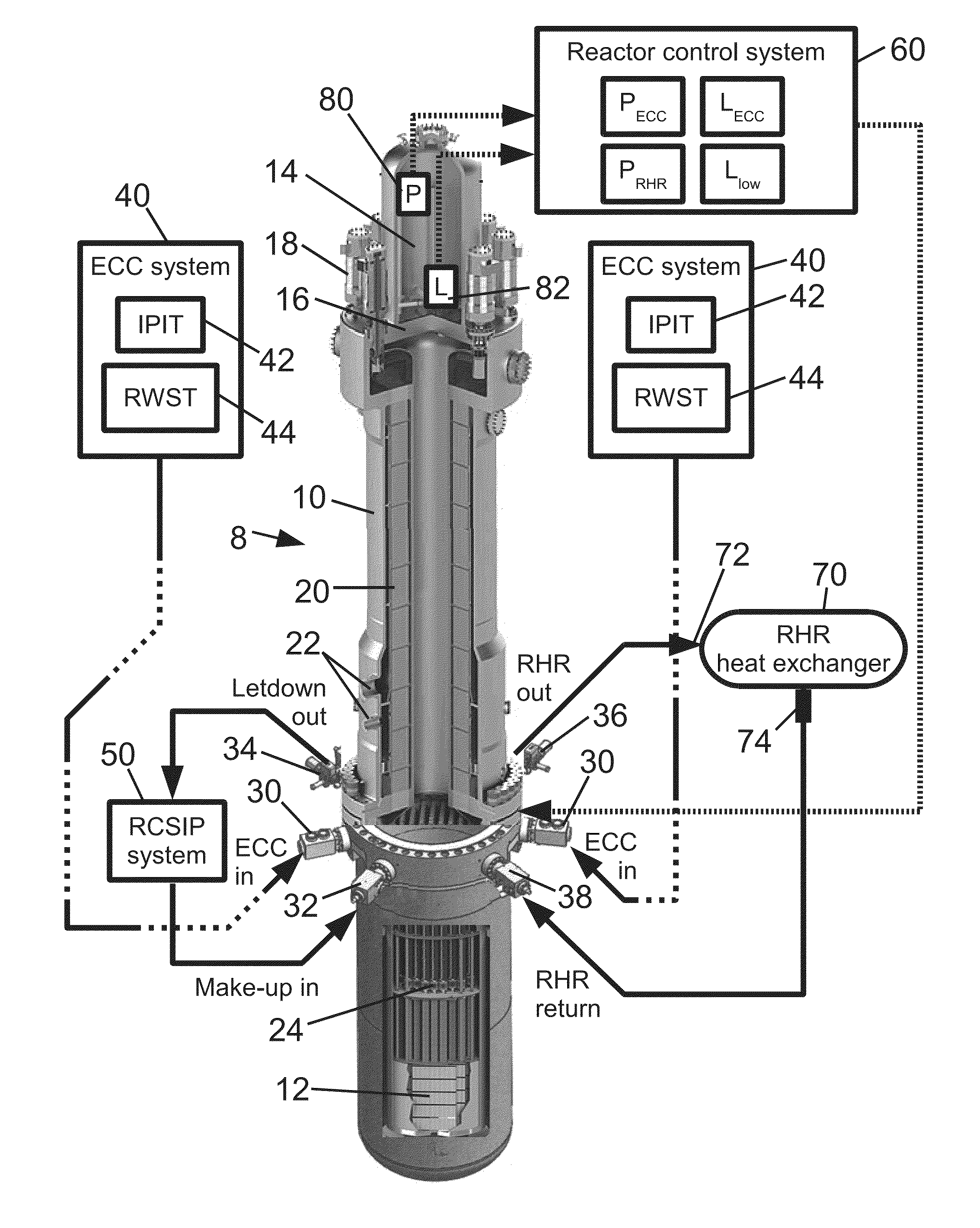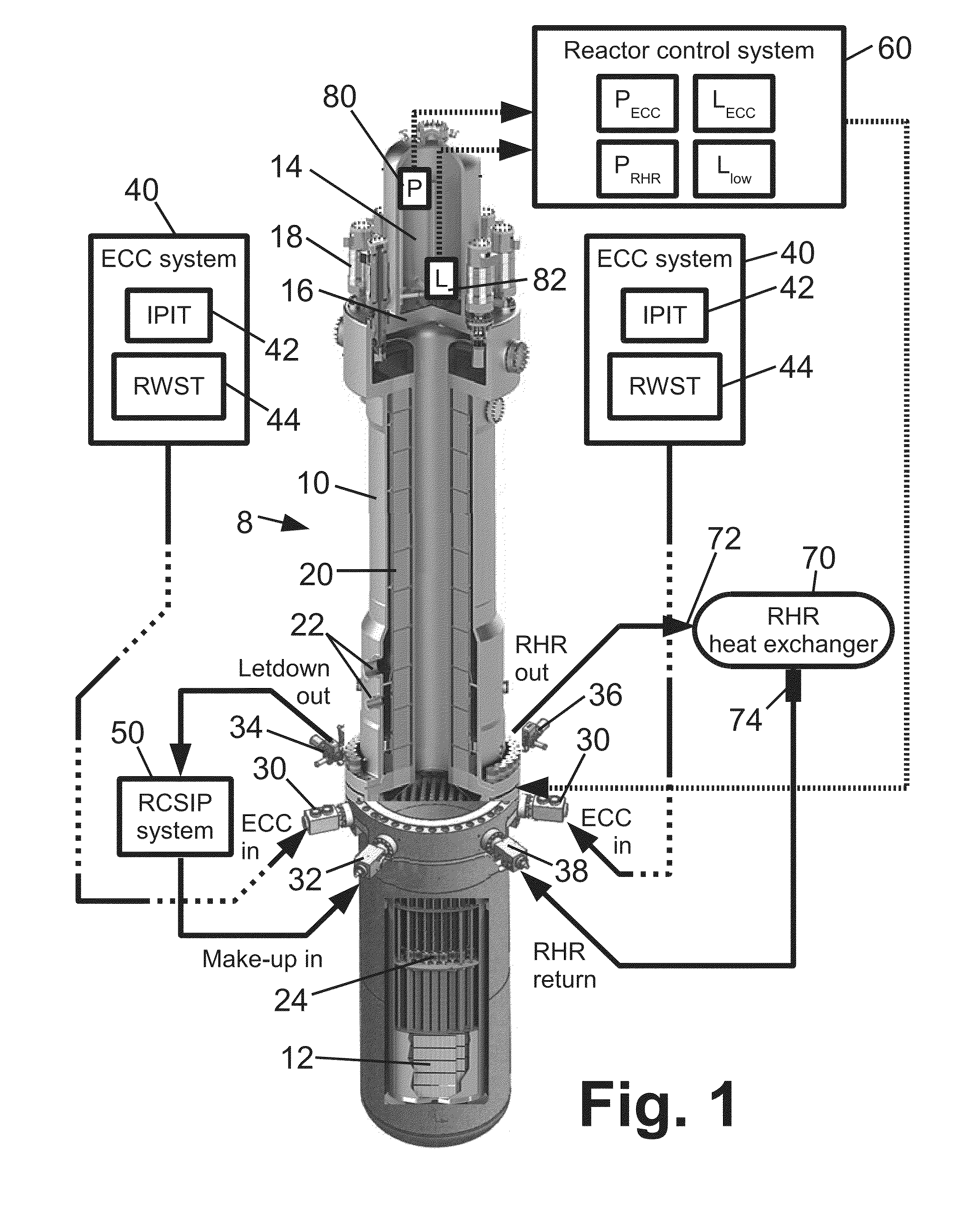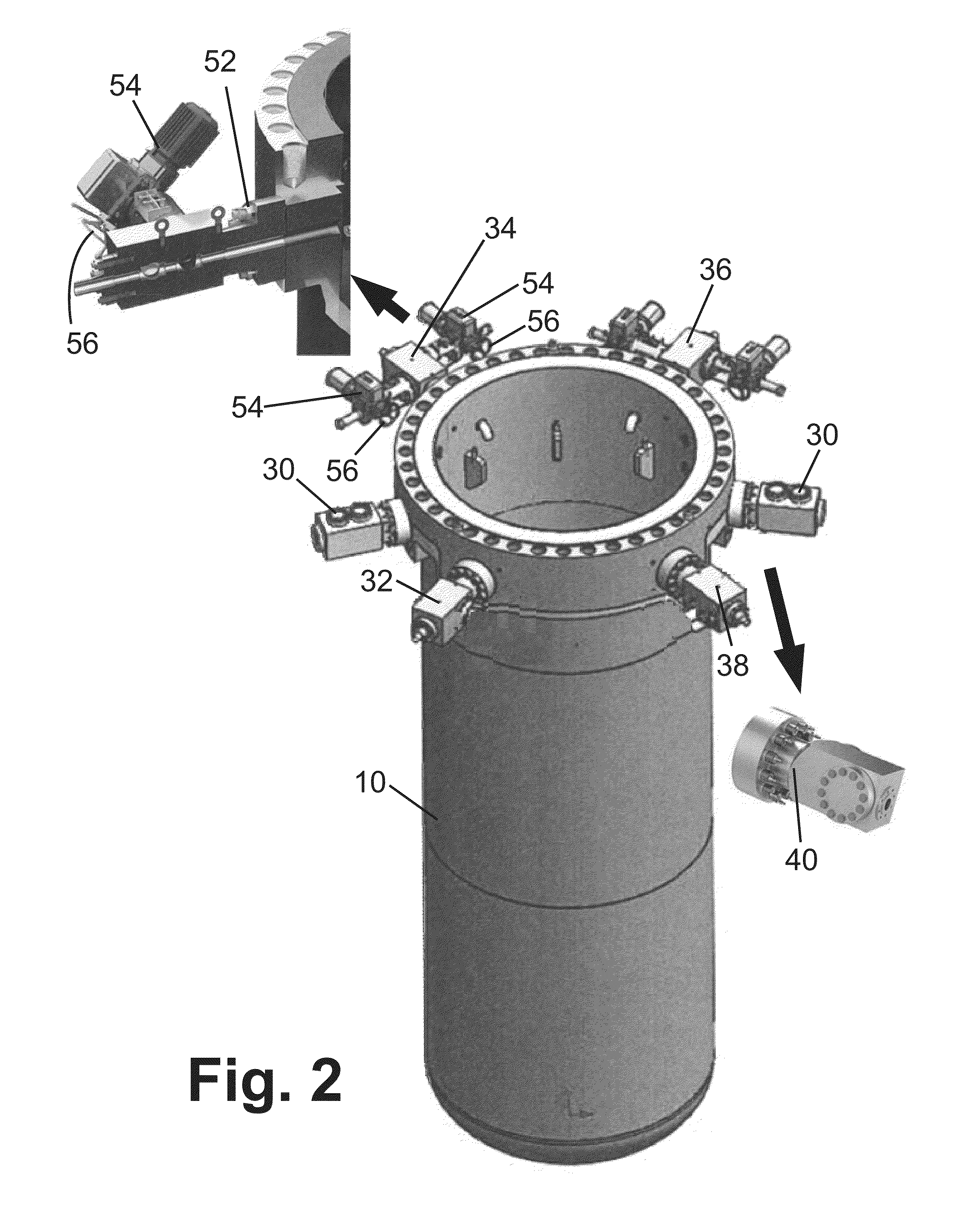Integral isolation valve systems and methods of operating same for loss of coolant accident (LOCA) protection
a technology of isolation valve and integrated valve, which is applied in the fields of nuclear reactor safety arts, nuclear power arts, nuclear elements, etc., can solve the problems of own set, pneumatic, hydraulic or electric control line, and the failure of the loca
- Summary
- Abstract
- Description
- Claims
- Application Information
AI Technical Summary
Benefits of technology
Problems solved by technology
Method used
Image
Examples
Embodiment Construction
[0015]The IIV systems and operational methods disclosed herein are based on certain observations made herein regarding such systems and methods.
[0016]One observation is that any vessel penetration that exclusively provides flow into the nuclear reactor can be sufficiently protected by a passive integral isolation valve (IIV) in the form of a check valve built into the forged flange that admits flow into the reactor pressure vessel but blocks flow out of the reactor pressure vessel (i.e. admits flow at above a threshold pressure into the reactor pressure vessel, while blocking flow otherwise). Such a check valve includes no actuator and operates entirely passively, and is sufficient to prevent coolant loss at a pipe break with no intervention by reactor operators.
[0017]A second observation is that any vessel penetration that exclusively provides flow out of the nuclear reactor must be protected by an active valve—that is, a valve whose operation is driven by an electric (e.g. motor-o...
PUM
 Login to View More
Login to View More Abstract
Description
Claims
Application Information
 Login to View More
Login to View More - R&D
- Intellectual Property
- Life Sciences
- Materials
- Tech Scout
- Unparalleled Data Quality
- Higher Quality Content
- 60% Fewer Hallucinations
Browse by: Latest US Patents, China's latest patents, Technical Efficacy Thesaurus, Application Domain, Technology Topic, Popular Technical Reports.
© 2025 PatSnap. All rights reserved.Legal|Privacy policy|Modern Slavery Act Transparency Statement|Sitemap|About US| Contact US: help@patsnap.com



